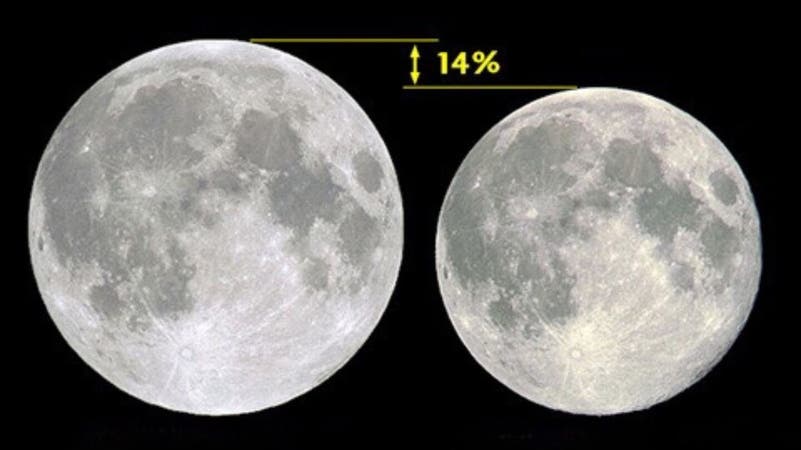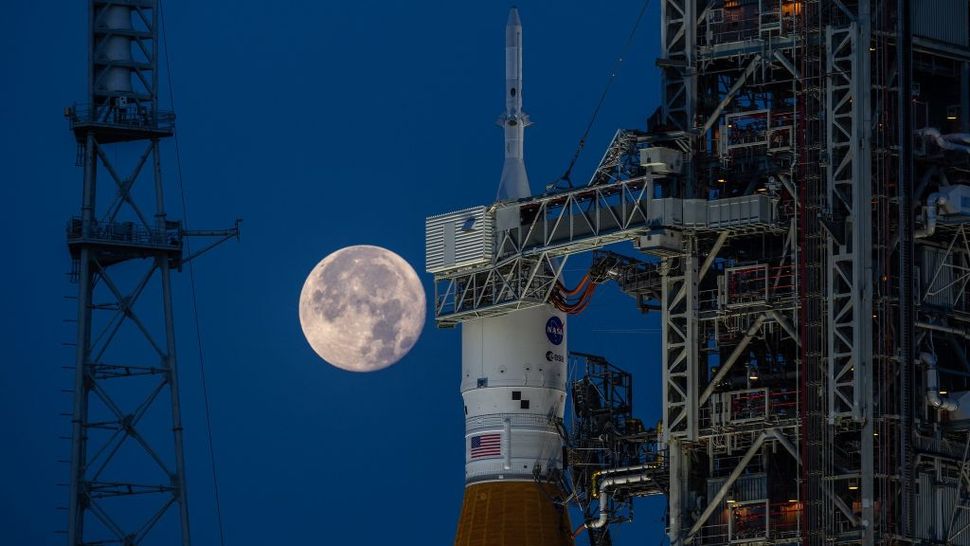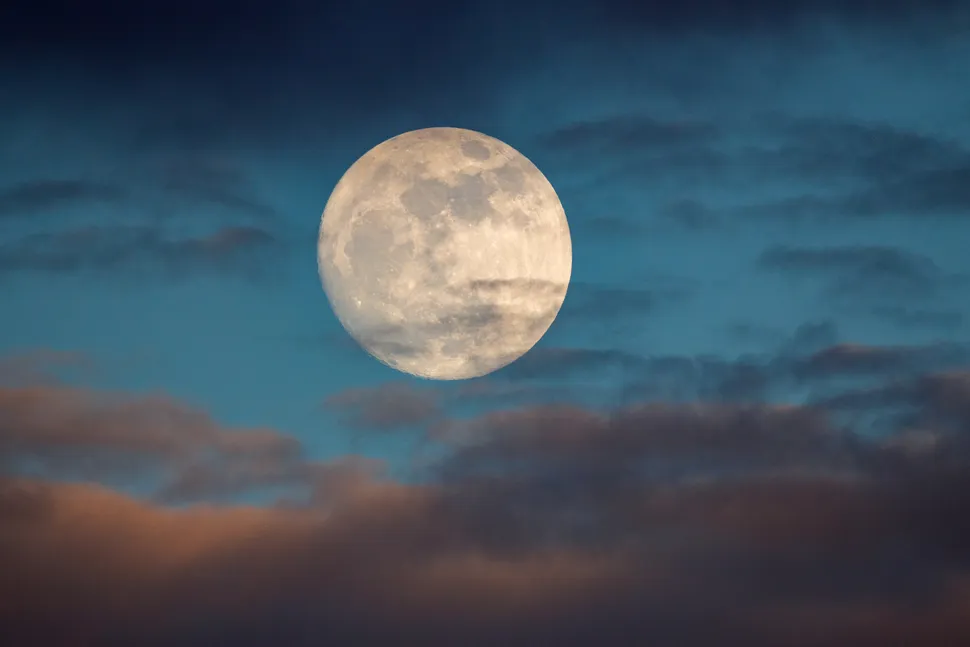Don't miss it.. the largest giant moon that illuminates the Earth's sky tonight (also called the Gazelle Moon)
Weather of Arabia - The sky of the Arab world and the world will witness today, Wednesday (July 13) the completion of the Dhu al-Hijjah moon, and it will be the third giant full moon and the closest to Earth this year, and the giant moon of July will illuminate the sky of the Earth tonight in the so-called deer moon .
Today, at 12:00 noon, the moon will reach its closest point to Earth for the year 2022 (perigee), at a distance of 221,994 miles (357,264 kilometers). After nine hours and 38 minutes (that is, at 9:38 pm Mecca time), the moon will reach the phase of the full moon, and tonight the giant full moon will appear 14% larger and 30% brighter compared to the full moon at its farthest from Earth (apogee).

How does the moon appear full?
The full moon (full moon) occurs in the middle of each lunar month when the sun, earth and moon are in perfect alignment, and because the moon's orbit is tilted about 5 degrees from the plane of the earth's orbit, the sun's light falls completely on the side of the moon facing the earth, so the moon appears fully lit.

The full moon of July is also called the "gazelle moon", why?
The "deer moon" or "buck moon" was given to the July full moon by the indigenous Algonquin people in what is now the northeastern United States. The full moon got its name because it was during this time that the male deer, known as the Buck, sprouted their velvet antlers.
There are other names for the full moon that occurs in July: Thunder Moon, due to frequent thunderstorms in early summer. In Europe, the full moon is called the "hay moon" because it coincides with the season of hay gathering or the "grain moon" in the United Kingdom.
See also: pictures | The Gazelle Moon dazzles the world and illuminates our skies for three consecutive nights

How often does a supermoon happen?
Since a full moon is considered a giant moon if its distance from the earth is equal to or greater than 90% of the distance from apogee to perihelion, it turns out that there can be more than one giant moon each year. In some years the supermoon event occurs three or four times (such as this year), and in a few cases (such as in the years 2029 and 2033) there can be as many as five!
Retired NASA astronomer Dr. Fred Espenk has created a website that provides lists of all the giant moons from the years 2000 to 2100. ( website via this link ).
The giant moon does not affect the earth except for the tides
The giant full moon does not affect the globe, with the exception of the phenomena of the tides. Every month on the day of the full moon, the earth, the moon and the sun are regulated, and this causes greater tides and tides than usual. The high tide rises exceptionally, and the lowest tides occur exceptionally. The full moon will be close to the perigee, this phenomenon will emerge, but the effect of the moon at perigee is small, but it may affect in the event of coastal storms encountered at this time, which will exacerbate coastal floods.
You may also be interested: What is the hidden effect of the moon on Earth's weather?!
Arabia Weather App
Download the app to receive weather notifications and more..



